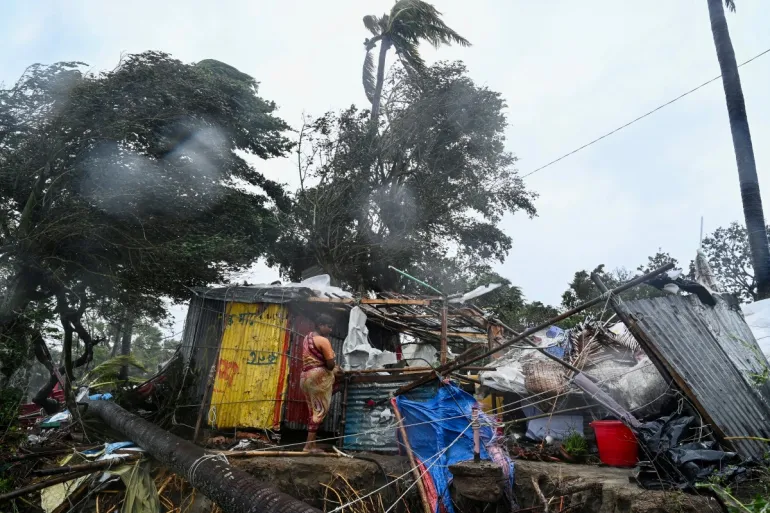Cyclone Dana is raging on the east coast of India, causing widespread damage to regions stretching from Orissa to West Bengal. Strong winds of up to 130 km/h are accompanied by heavy rainfall, causing widespread destruction and threatening the lives of local residents.
Cyclone Dana hits Indian coast: winds up to 120 km/h, large-scale evacuations in Odisha
A powerful cyclone ripped through India's east coast on Friday, uprooting trees, snapping power lines and causing flooding in parts of the country. There were no reports of casualties or injuries, authorities said.
Cyclone Dana reached Odisha around midnight with sustained wind speeds of 100-110 km/h (62-68 mph) and gusts of up to 120 km/h (75 mph), the Meteorological Department said. However, by midday the storm had weakened to a normal cyclonic storm and is expected to weaken into a deep depression in the afternoon.
Schools in Odisha were closed, flights to Bhubaneswar were suspended and more than half a million people were evacuated. Dilip Routray, the district's chief administrative officer, said trees were damaged in the affected areas but there was no threat to people or major infrastructure. He said power was expected to be restored by the end of the day and ports and industrial areas were unaffected. The Paradip port, which was temporarily suspended, has resumed operations, a port official said.

By Friday morning, residents in some areas had begun to return home from temporary shelters. One local resident said he had tied his goats outside his home before evacuating and was happy to find his animals and home safe when he returned.
Heavy rains also hit West Bengal, where, coupled with rising sea levels, they led to flooding of low-lying areas, damaging rice and winter vegetable crops in the agricultural areas of Sunderbans. The region's minister for affairs, Bankim Hazra, confirmed that vegetable crops were drowned in fields due to the storm surge.
Airports in Bhubaneswar and Kolkata, the capital of West Bengal, resumed operations on Friday morning after being temporarily closed the previous evening. Some suspended train services were also given permission to resume services.
The cyclone season, which typically runs from April to December, brings powerful storms to the coasts of India and Bangladesh every year. The most destructive in recent years was the 1999 Odisha cyclone, which raged for 30 hours and killed about 10,000 people.
Cyclones and hurricanes: how powerful tropical storms form and why they are dangerous
Cyclones and hurricanes are powerful natural phenomena associated with the formation of low-pressure areas and characterized by strong winds and heavy rainfall. They form in tropical zones where warm sea waters evaporate, saturate the air with moisture and create convection currents. This process lifts moist air upward, which causes a decrease in pressure in the center of the cyclone and increases the influx of air masses from surrounding areas.
Hurricanes, typhoons and cyclones are essentially different names for the same phenomenon, depending on the region: in the Atlantic and eastern Pacific Ocean they are called hurricanes, in the western Pacific Ocean they are called typhoons, and in the Indian Ocean and on the coasts of Australia they are tropical cyclones. Wind speeds inside such storms can reach 250 km/h, which allows the elements to destroy buildings, uproot trees and cause serious flooding.

Cyclones develop in several stages. First, a tropical depression forms - an area of low pressure with little wind. If the depression gains strength, it forms a tropical storm, and only when wind speeds reach about 119 km/h does it receive the status of a hurricane or cyclone. These storms can last from several hours to several days, moving slowly and losing strength as they encounter land or cold waters.
Satellite systems, weather models and meteorological stations are used to predict and track cyclones. This allows the population to be warned of the threat in advance and take precautionary measures. However, despite modern technology, cyclones still pose a serious threat to human life, agriculture and infrastructure, especially in coastal areas.

